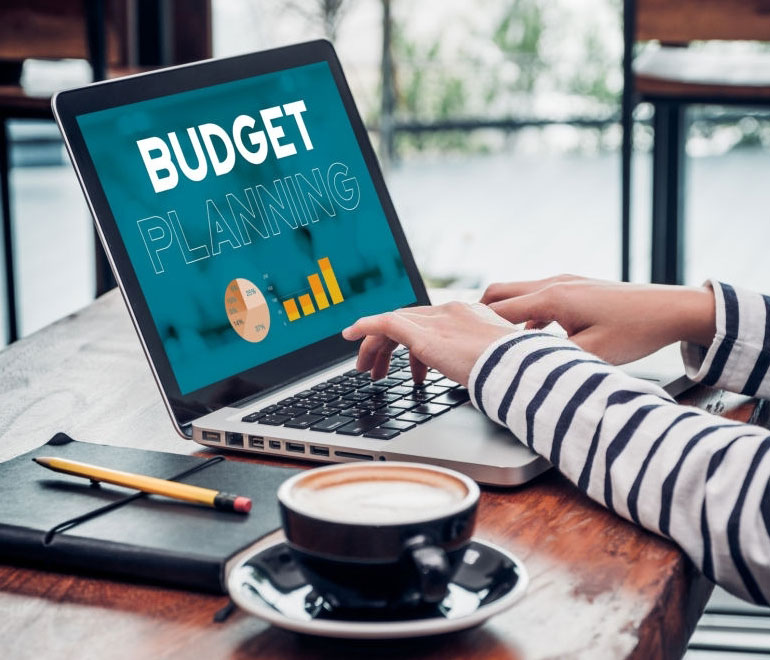





Budgeting is one of the most crucial aspects of any business. Every business owner knows that a budget is essential, however only a few understand how to get it right. In the case of small and medium sized businesses (SMEs),every aspect of budgeting becomes crucial, and that is why every step of the process is of utmost importance. Often the terms budgeting and forecasting are interchangeably used. Here is what you should know about budgeting and forecasting
A Budget is a document that is made annually or bi-annually, which is indicative of how funds will come in and be used in a business for a period of time. It usually has two parts, and that is (i) fund inflow and (ii) fund outflow. Funds come into the business through capital brought by shareholders, loans, or revenues and then fund outflow happens through salaries, rent, inventory, and other expenses. Thus, budgeting is the art of estimating how much money you intend to use and how do you raise these funds. Furthermore, it indicates how much you propose to earn from your business in any given year or period of time for which the budget has been prepared.
A Forecast is a prediction of what is likely to happen in your business based on historical data. Put simply, a financial forecast will show you where your business is heading. This is because a Financial Forecast relies heavily on past data, which is usually not available when starting a business. When starting a business, one can base estimates based on market research and industry benchmarks. However, as the business grows, one can gather the information that is relevant in Forecasting. Regular forecasts and updates will be helpful to develop solutions to issues faced.
Small businesses should prepare pro forma financial statements that would help the business owners track actual events against financial forecast and prepare adjustments as the year progresses.
Below are the key steps:
How much money do you intend to raise for your business? Where will it come from? Here are a few areas that you can raise money;
The outflow of funds from the business is typically expenses. Some of the expenses in small business include:
Other cash outflows could include loan repayments or promoter withdrawals.
Once you get to know how much you intend to make and how much you plan to spend, you can now draw up the P & L. The main aim here is to determine the profits or losses you will make in your business.
Assets are everything that your business owns. They include:
Liabilities are what your business owes others. Here are some examples:
It is important to note that financial forecasting and budgeting go hand in hand. That being said, let us run through how to do a forecast for your business.
We all understand that business goes through different seasons, and sales are affected by various elements. However, you can still use data from the last couple of seasons to make a forecast. Studies have shown that humans and businesses are predictable and we can use that to our advantage. Divide the year into four quarters and determine the sales made for each period in the previous years. This may be referred to while preparing a sales forecast. For established businesses, while may you refer to prior period data to make forecasts, also take into account the current market or economic conditions.
The Cost of Goods Sold (COGS) is the cost you incur to produce or while preparing to sell your products. It usually entails things like:
To determine this, you need to do a sales forecast first. The main reasoning here is, sales will have a more significant bearing on your COGS. The higher your sales, the higher the COGS.
As the name suggests, cash flow is the money that comes in and goes out in your business. The inflows are usually the receipts, and the outflows are usually the payments. You can make a cash flow statement annually or at any time you feel is necessary for your business. Cash Flow Estimates are vital to any business as they allow you to know the months when you will have excess cash, and when there will be cash shortages. Always review your cash forecasts to see if your cash payments are more than cash receipts – it means there is a fund shortage in the business. This, in turn, helps you make better business decisions.
Small business owners cannot assume that an expected profit on the P & L implies that all is well. Since profit is not the same as cash, a projected cash budget has to be developed to ensure that the business is cash-flow positive. A small business owner also needs information from the balance sheet.
By now, you understand how budgeting and forecasting are essential for a business. Calculating the two may seem easy on paper, but it requires skills to do it correctly. This is where a finance professional, an outsourced accountant, or a part-time CFO can assist.
Suite No. 108 & 109, Mezzanine floor, Al Diyafah Shopping Center, 2nd December Street, Al Bada’a, Dubai.